Sticks mean stable, as Jim Chapman tells us
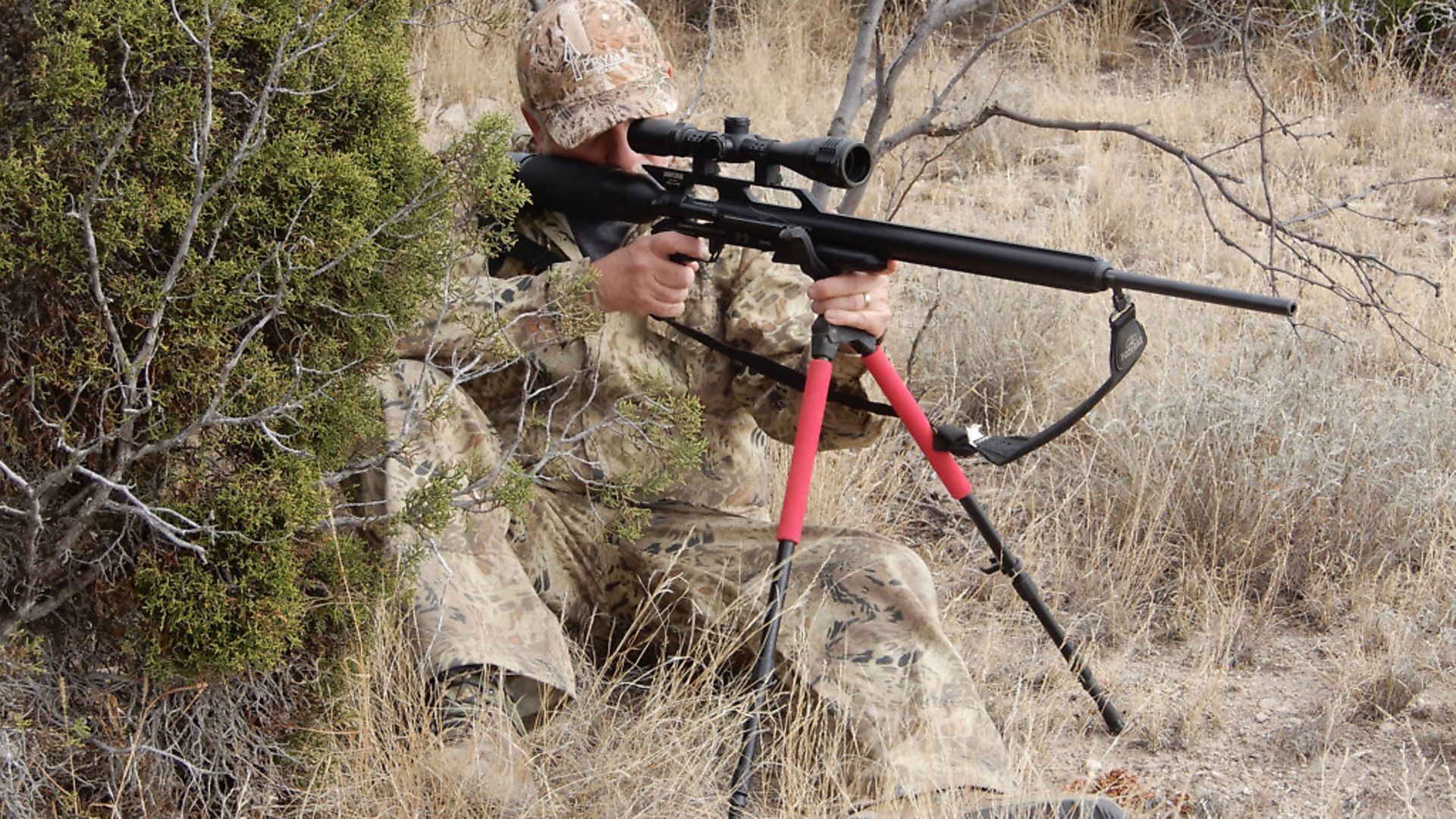 credit: Archant
credit: Archant
I grew up in the far west, hunting deer in the mountains, boar in the coastal hills, and predators in the open deserts. I often shot offhand and took pride in being a better than average offhand shot. I took a lot of game this way and considered myself an ethical and effective hunter. It’s important to note that I was hunting with centrefire rifles for bigger quarry, and rimfires such as .22 long rifle or .22 magnum for small game, but as I gained experience with airguns, I quickly noted that these guns didn’t offer the margin of error that a centrefire or even a rimfire rifle did. Since air rifles do not generate the hydrostatic shock that firearms do, the size of the kill zone was effectively reduced for whatever game was being pursued.
Also, dealing with the trajectory of the lighter and slower moving airgun projectiles requires the hunter to move in closer, and even with these reduced shooting distances, trajectory is more pronounced. The long-range limitation with an airgun is not so much the inability to deliver adequate energy on target, it is rather the challenge of delivering the projectile exactly on target. The take-away message is that airgun hunters need to get in closer and be much more selective in their shot placement.
Another factor was that I started shifting my hunting emphasis to airguns in my late 30s, and hard as it is to admit, practice does not make up for youth. As I age, I find that both my eyesight and stability are not what they used to be. I can still shoot offhand, and when plinking or shooting at targets I’m a competent offhand shooter, but I no longer have the same confidence that I will hit my target every time – and that is not the right mindset when squeezing the trigger with a live target in the cross hairs.
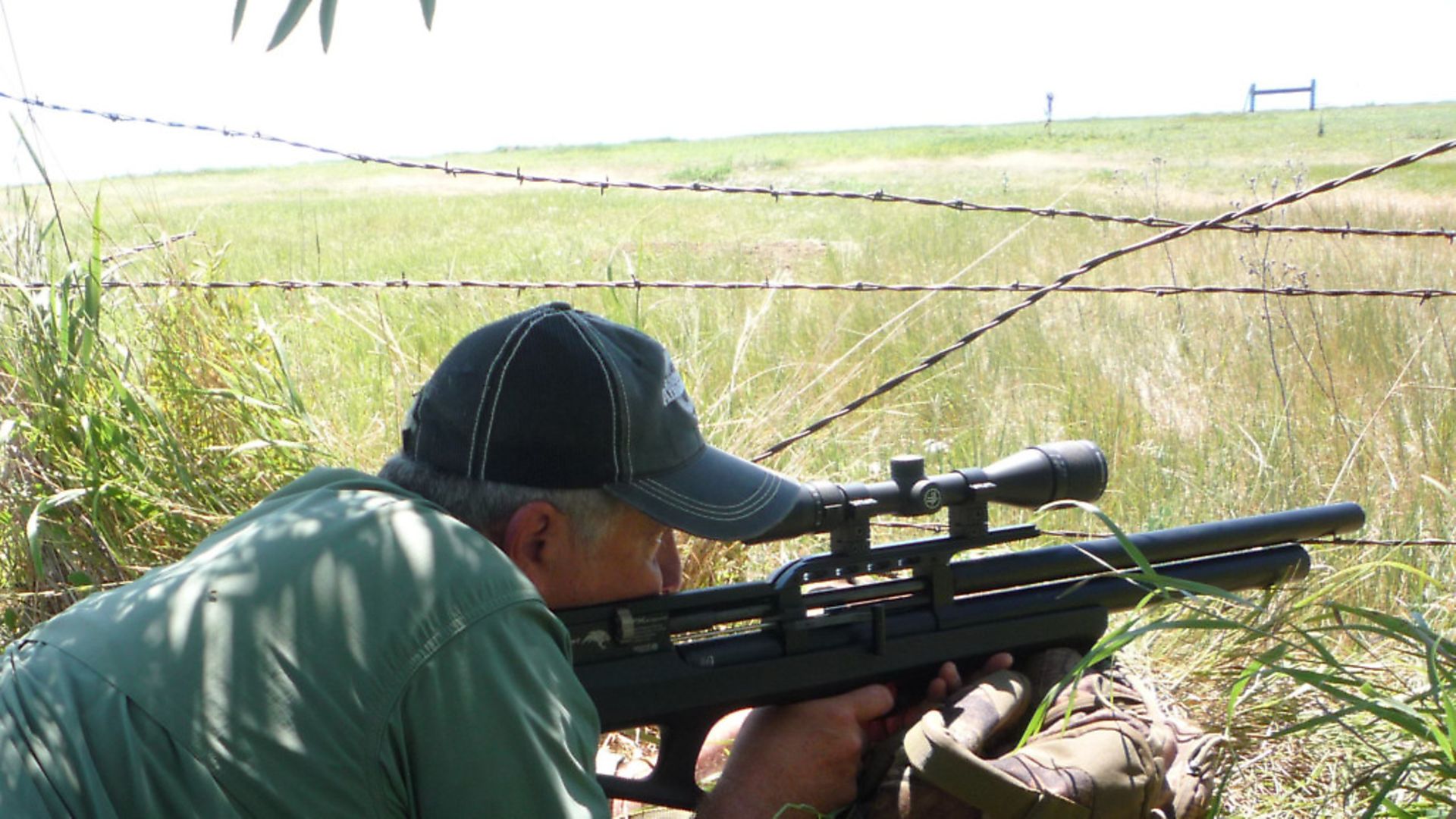 credit: Archant
credit: Archant
Moving to airguns
So, for these reasons, when I moved to airguns I found that I preferred to shoot from some type of rest when hunting. This could be shooting off my pack or a rolled-up jacket when I could go prone, or leaning over a rock or tree trunk when they were available. I also started to practise more shooting off my knee, or while sitting. However, these natural rests were often not available, and whilst shooting off my knee was fine for closer shots, it still didn’t offer the stability I was after if a longer shot was required, and this is when I started using shooting sticks more.
Even in my early years with springers I didn’t use shooting sticks much, because rested shooting is not the strength of most spring-piston air rifles. In any event, I tended to keep most of my shots inside of 35 yards, but when PCPs came along, I recognised the intrinsic accuracy when sighting in at the bench, and the possibility of extending range significantly. The rub was that I was only consistent when on the rest.
The challenge and enjoyment of airgun hunting for me is getting in close, but this must be taken in context. Getting inside of 75 yards on a prairie dog town might not be possible, depending on the hunting and predator pressure to which these ground dwelling rodents are exposed. A 75-yard shot might be ‘close range’ in terms of a prairie dog shoot, but it is still a fair chunk of ground with respect to even a higher powered .22 or .25 PCP, and regardless of whether you take head or chest shots, the kill zone with an air rifle is generally about 1-1½ inches, compared to just about anywhere in the head, chest, or body when shooting a small-bore centrefire.
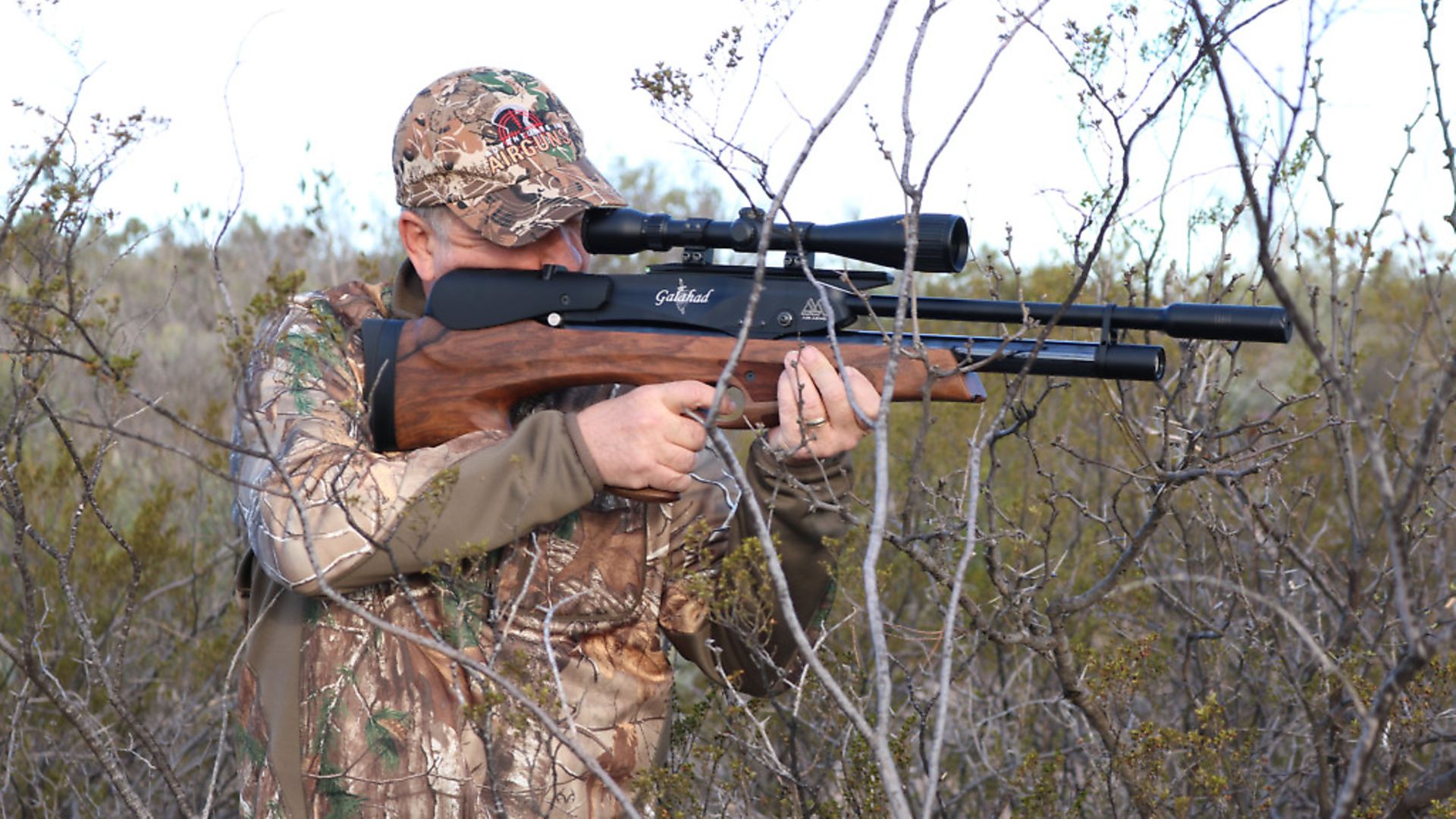 credit: Archant
credit: Archant
Not for every shot
It wasn’t a conscious decision, but I slowly found that I’d practise shooting off sticks whilst at the range, then carry and use them when hunting in the field. When stalking the woods after squirrels, my compact Primos Polecat sticks are always in my bag, although I don’t always use them. This is because I’m often shooting up high in the trees, and manoeuvring sticks – unless they are very long – can be difficult in this situation. When in the woods, it is often easy to find a tree trunk, branch, a fallen log, or some other natural feature that will serve as a rest, but even in this situation an accessible set of sticks are good to have when/if you need them.
However, I’m often out on the open grasslands hunting prairie dogs, where there are usually no natural rests available, the grass is too long to let the hunter lie prone and shoot off their pack, and distances of 75-100 yards are the norm, so I use sticks on virtually every shot. With the combination of longer distances, wind, and a small kill zone, this is the only way I can achieve consistent shot placement.
There are a lot of options when it comes to shooting sticks, but the primary requirements that I look for are systems that offer rapid deployment, stability, and portability. When shooting big game, there is often time to set up sticks; a tripod with three sections may take a minute or so to deploy and might be necessary for a standing shot at distance. When hunting predators, the hunter is often set up in deep camouflage and waiting for the quarry to come into a call, so again, a sturdy tripod might be the ideal approach. However, when on a ‘spot and stalk’ hunt for squirrel or rabbit, it could be necessary to set up in a matter of seconds before the animal moves. Besides happening faster, these shots tend to be closer, so in this scenario my preference is for a bipod shooting stick, and one that can deploy very quickly. As a matter of fact, these can be opposing requirements, stability vs compactness and rapid deployment, so the type of terrain and quarry will inform your decision.
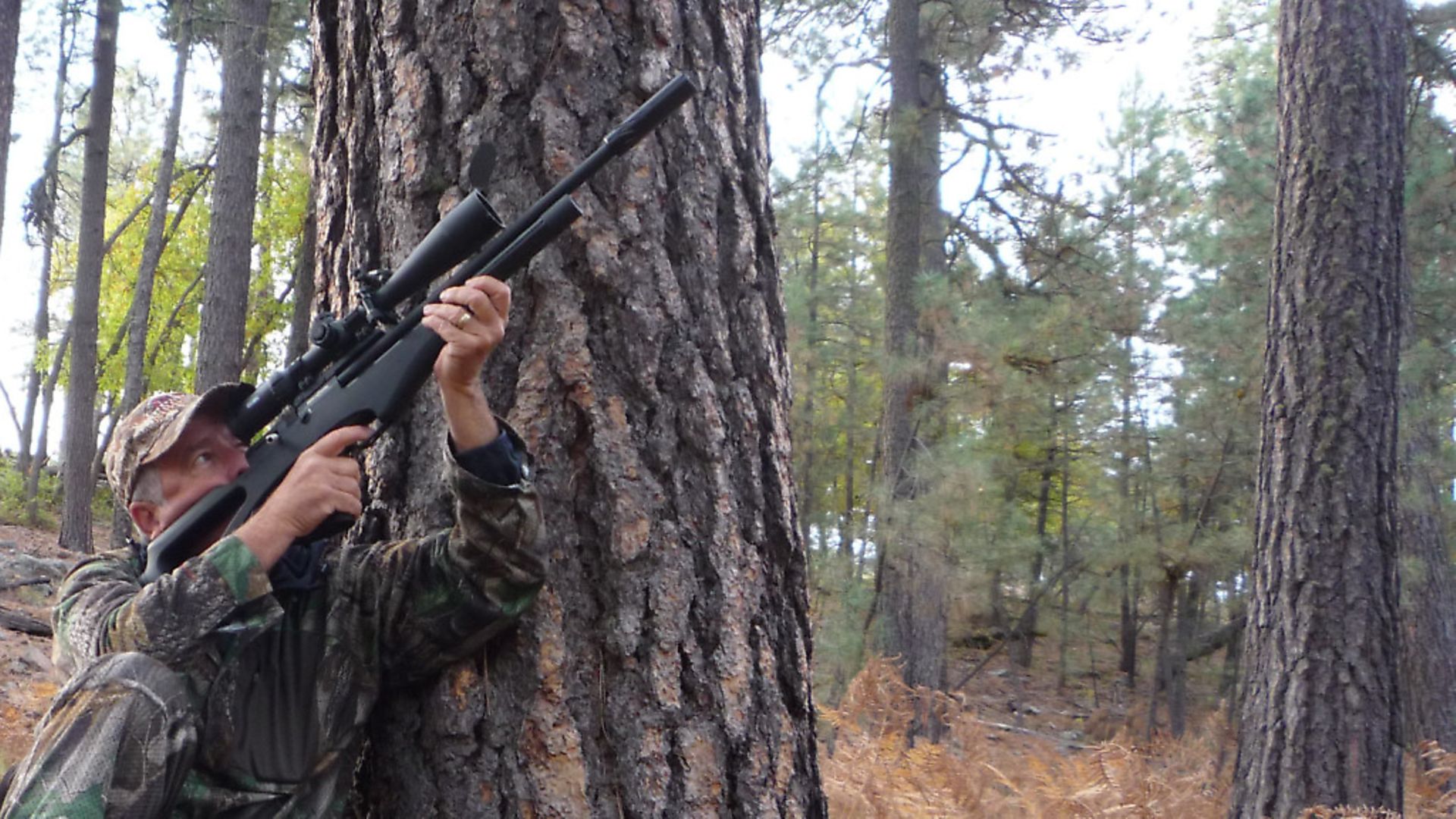 credit: Archant
credit: Archant
Adjustability
There are other factors to consider. How much adjustability do you think will be required? Do you need to move from kneeling to standing shots? Is there dense undergrowth that makes a tripod more awkward than a bipod to move around? How far will you be hiking? Are you going to walk to a blind and settle in, or will you cover five miles through the hills with rapid sets along the way?
The types of sticks that I use has narrowed down over the years; when hunting predators, I like a tripod with a rifle rest that will cradle and hold tight to my rifle’s forestock. The one I use is the Bog Pod, which has a rubberised deep ‘V’ that snugs my rifle in and lets it sit in readiness for long periods of time whilst remaining motionless. This is particularly useful in those situations in which motion must be kept to a minimum over long periods of waiting, so not to spook incoming game.
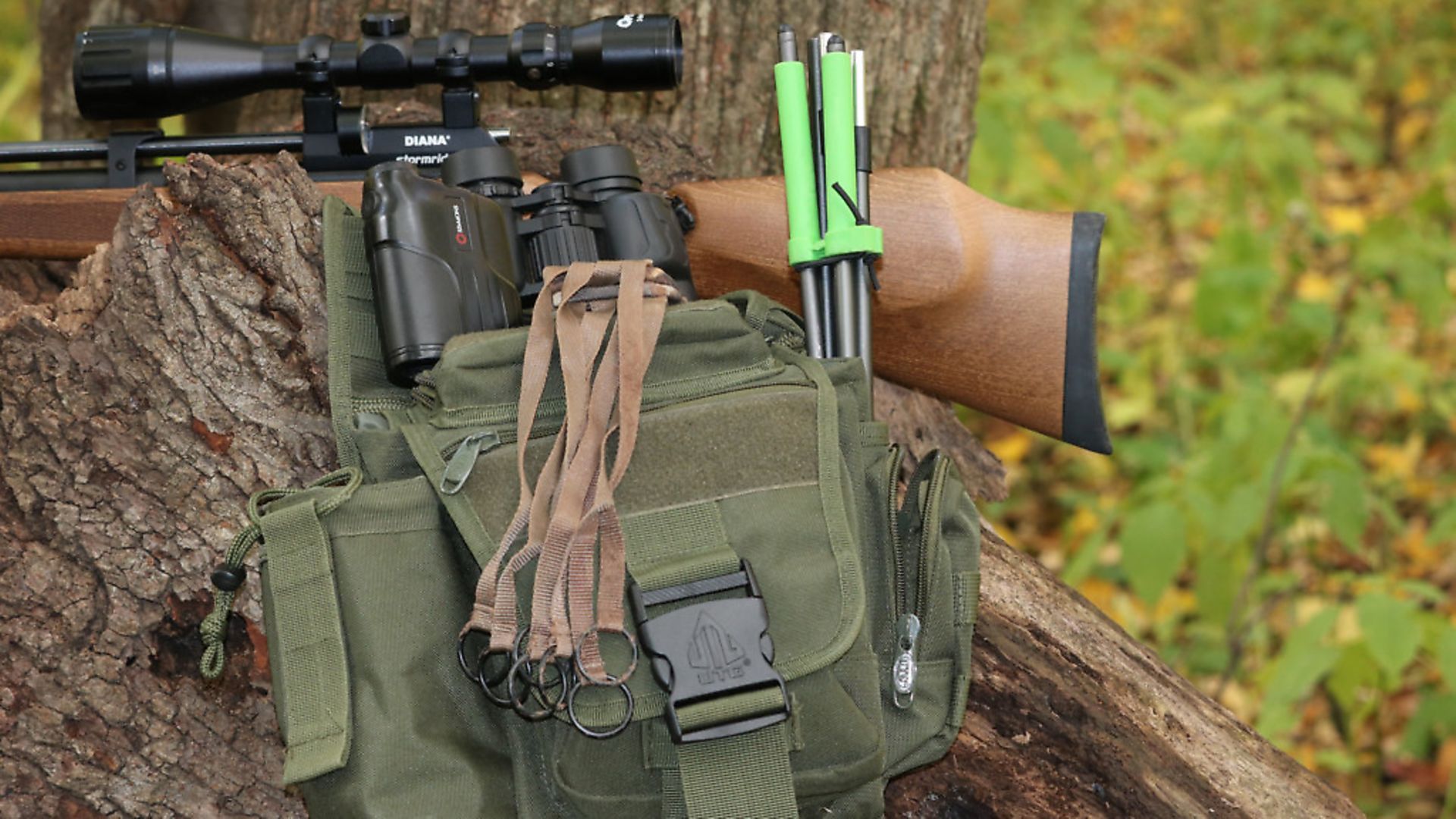 credit: Archant
credit: Archant
However, the sticks that are almost always with me are the Primos Polecats that I mentioned previously. The reason I like these is that they are lightweight and fold up into a very compact package that slips into a side pocket on my hunting pack. They are out of the way until I need them, but I can reach back and have them in hand in a matter of seconds, and not much longer to deploy them by releasing the retention band and giving them a shake. Once deployed, I find that by simply opening or closing the spread of the sticks I can bring my rest up or down, and it’s easy to sweep the muzzle horizontally – and the important point here, is that they are always in my pack and ready when needed.
You will notice that I opt for detached shooting sticks, rather than rifle-mounted bipods. Mounted bipods can be more stable than sticks, but my experience is that there is not enough latitude for changing positions if your quarry is moving. This means that in some situations they are difficult to use, and in the worst scenario can become a hindrance. Again, this is based on the type of hunting I do; every hunter needs to figure out their own kit. In my experience, it always comes down to a balance between accessibility (size, weight, ease of deployment) and stability. The sweet spot rests (pardon the pun) on your particular hunting needs.
__________________________________________________
Read more from Jim...
Hunting in America with an entry level PCP
A Hyrax Hunt in South Africa
Hunting USA: A look at my hunting kit